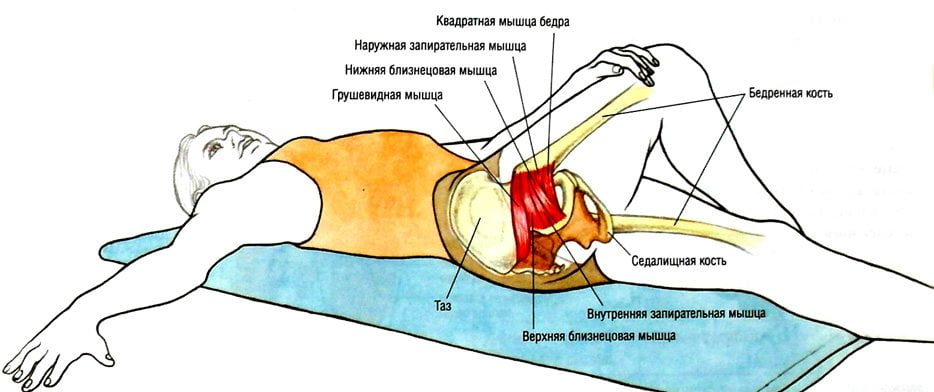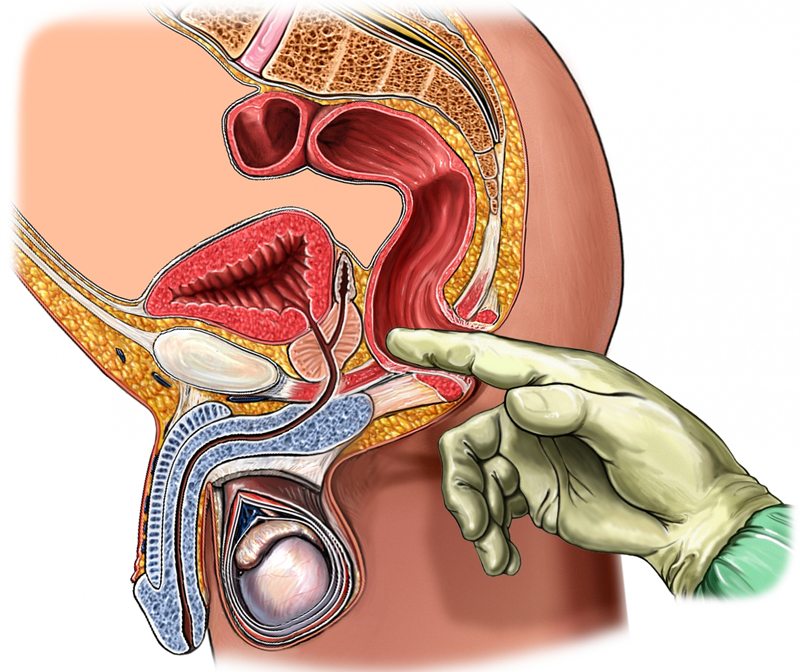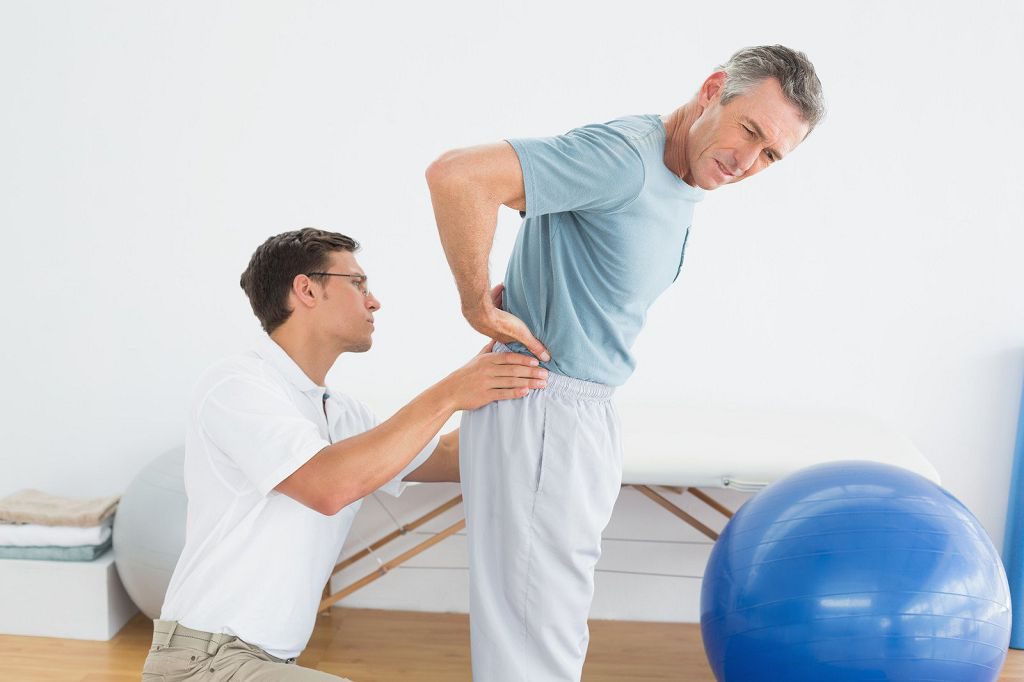Piriformis syndrome is a collection of rather painful and annoying sensations affecting the gluteal region. Pain can also be transported to the groin area, give away and even, but the syndrome always begins with the buttocks.
Reasons for development
Piriformis syndrome and can be triggered by a number of different factors - primary and secondary. The first category includes:
- physical overstrain of the muscles of this department;
- injuries, including;
- severe hypothermia, especially for a long time;
- long stay in an uncomfortable position;
- an injection carried out unprofessionally, in violation of the rules.

Other influences can cause the development of the primary form of the piriformis syndrome, we have listed only the most common ones.
In the secondary form of the syndrome, it appears as a result of other diseases, most often affecting one of the organs located in the small pelvis, or the sacrum of the spine. The development of the syndrome is most likely in patients with a diagnosis of "lumbosacral radiculitis with disc displacement". Piriformis syndrome occurs in 50% of this group of patients. Often it becomes the result of a pinched sciatic nerve.
Syndrome symptoms
The main symptoms of piriformis syndrome are:
- pain in the affected buttock, which is aching or pulling in nature. Able to be given to the hip joint, in some cases, the sacroiliac is affected. Sensations increase while walking or standing for a long time. In the "half-squat" position, the intensity increases to almost unbearable;
- in a sitting state, the pain remains even, subsides only when the patient takes a lying position;
- if the gluteus maximus muscle is relaxed, the piriformis can be felt without difficulty: it is constantly in a tense state;
- light tapping on the affected muscle “shoots” pain in the back of the leg. The pain may extend almost to the ankle;
- piriformis syndrome causes tension in other muscles that make up the pelvic floor.
The last symptom is optional, but is so common that it is worth mentioning.
Infringement of the sciatic nerve manifests itself in other signs:
- the pain is not very strong, dull; it is accompanied by other unpleasant sensations such as numbness of the muscles, burning (as an option - chilliness) in them;
- pain is not continuous. They appear during a sharp change in weather or become the result of stress;
- Achilles reflex becomes less pronounced. It is tested by lightly hitting the calcaneal tendon with a medical hammer. When the sciatic nerve is pinched, the gastrocnemius muscle contracts weakly or does not respond at all to the test.
Sometimes, if only the fibers from which the tibial nerve is formed are infringed, the pain is localized in the muscles of the lower leg, behind.
If the patient's gluteal artery is compressed, the symptomatic picture looks different: the skin on the affected leg turns noticeably pale, the vessels spasm sharply, which causes lameness. You can continue the movement only after relaxing the limb, for which you need to sit down, or better lie down. In most patients, such attacks recur from time to time.
Diagnostics
Piriformis syndrome, the symptoms and treatment of which we are considering, has quite vivid manifestations. A non-specialist can easily confuse these signs with symptoms of other diseases. Therefore, the advice of a medical professional is required. To confirm the diagnosis, palpation is used - probing the painful area and its associated zones.
Studied:
- inner part of the greater femoral trochanter;
- sacroiliac joint;
- sacrospinous ligament;
- hip joint;
- piriformis muscle.

One of the most accurate diagnostic methods is transrectal palpation.: in a tense state, the problem muscle gains elasticity, which, with such a diagnosis, leaves no doubt.
Sometimes the patient is offered an exclusion method: an anesthetic injection is injected into the piriformis muscle (the drug is selected taking into account the patient’s state of health and chronic pathologies), the doctor draws a conclusion about the nature of the patient’s disturbing sensations based on the dynamics of the detected shifts.
If the piriformis syndrome is caused by traumatic effects, the examination is usually stopped at this point, and a course of treatment is prescribed. However, if the nature of its development is not clear, additional studies will be required. The patient may be recommended, tomography - computer or magnetic resonance, biochemical blood test.
If piriformis syndrome is diagnosed, treatment depends on what causes it. The syndrome itself is not an independent disease, therefore, the drug effect is purely symptomatic, aimed at relieving pain, inflammation (if it has already started), and muscle tension. To solve this problem, medicines of several groups are prescribed:
- for anesthesia and relieve inflammation: from the non-steroidal series. They not only block the focus, preventing the spread of inflammation to adjacent tissues, removing it from already affected ones, but also extinguish pain. Often drugs are recommended, because with this application they act faster, penetrate deeper into the fibers. His, Ketorolac, Meloxicam are also popular. If the pain is too strong, anti-inflammatory drugs are supplemented with analgesics;
- to relieve tension muscles - antispasmodics. They eliminate spasm, if it is already observed, prevent re-spasm. According to the "price - quality" ratio, preference is usually given to drugs based on drotaverine;
- if antispasmodics do not give the desired effect, the patient may be prescribed a course of muscle relaxants, which forcibly but quickly relax muscle spasms. Of this drug series, Mydocalm is considered the most common.
Sometimes, if the patient experiences severe pain, doctors spend by chipping the affected muscle with drug solutions.
However, drugs alone are not able to defeat piriformis syndrome. Treatment at the acute stage necessarily includes physiotherapy techniques. The most effective are vacuum therapy, laser or pharmaceutical acupuncture, acupuncture, and some others. A massage is also required, which relieves spasms and stabilizes blood flow. Often, patients are recommended rectal massage - it is considered the most effective for piriformis syndrome.
In addition to eliminating the symptoms of the syndrome, the doctor must prescribe a course aimed at treating the cause that caused it. Without this step, treatment becomes meaningless: the syndrome will constantly return, and the time gaps between relapses will steadily decrease.
Physiotherapy
The main technique by which piriformis syndrome can be defeated is exercises performed regularly. is aimed at relaxing spasmodic muscles, activating all the muscles around the piriformis and associated with it. Mandatory condition: perform the specified movements strictly in the listed order:
- the patient lies on his back, bends his legs at the knee joints, brings / spreads his knees. When they come into contact, it is required to push one knee with the other vigorously and actively, changing the object of effort in turn. Each pressure should last a few seconds;
- the patient lies on his back, presses his shoulders to the floor. He straightens one leg, bends the other at the knee. With the palm opposite to the bent leg, he presses the knee to the floor through the second limb. You need to stay in this position for as long as possible, at least half a minute. Then the exercise is repeated with the second leg;
- to stretch the piriformis muscle, the patient, lying on his back, bends his legs at the knees and keeps them on weight. The injured limb is thrown onto the healthy one, as if you need to lie down in the lotus position. The patient's hands wrap around the thigh of the supporting leg, pulling it towards him. With this exercise, the piriformis muscle is stretched, becomes more elastic, less prone to spasms;
- the patient should sit down, spread the feet wider, connect the bent knees. With one hand he leans on the couch, the other stretches forward and begins to rise. When the elbow is fully extended, the assistant (in this exercise you can not do without it) for the free hand helps the patient to straighten the body completely. At this stage, the knees open;
- The next exercise is performed while standing. For him, you need to get an expander or a very dense elastic band. One end of the device is securely attached to any rigid support, the other end is thrown over the foot from the damaged side. The patient stands sideways to the support and with effort, overcoming the resistance of the expander, takes the leg to the side to the maximum available distance without bending the knee. The leg must be returned to its place slowly, holding back the pressure of the expander and receiving the opposite load on the lower limb.
Specialists in physical therapy for patients with piriformis syndrome recommend doing exercises three times a day. Until recovery, it is advised to abandon any other training or reduce their intensity.
We help ourselves
If you have been diagnosed with piriformis syndrome, home treatment, combined with the efforts of a supervising physician, can quickly return you to ease in walking and pain-free existence. All measures are coordinated with the doctor.
Self massage
It relieves muscle spasm, normalizes blood circulation, helps the muscles return to normal functioning faster, and is quite affordable for self-execution.
One session takes about a third of an hour. In general, the course should include at least 12 procedures, in a month it needs to be repeated. No devices for self-massage are required, except for a rug on which to be located. A sofa or bed is not suitable for the procedure - you need a hard and hard surface:
- it is required to lie down with the sore buttock up, try to relax the muscle and massage it using the thumb. First, general kneading is performed, after heating the tissues of the entire area, especially close attention is paid to seals and painful places;
- to stretch the muscle, which makes available for massage a large part of it, the leg must be bent. But not excessively, so that muscular tension does not arise - with it, massage can even harm;
- if you are unsure of your abilities as a massage therapist, use a tennis ball. In this case, the position changes: the sore side is down, a sports equipment is placed under the muscle, on which you should ride, helping with your hands and pushing off with your feet;
- the direction of the massage is from top to bottom, along the muscle fibers. All movements are done smoothly, slowly, without excessive pressure.
If you are in the midst of an inflammatory process, and massage causes pain, you can limit yourself to soft circular kneading at the site of the lesion. It is advisable to engage in self-massage every four hours.
ethnoscience
Alternative medicine techniques are mainly aimed at relieving pain and inflammation. They take time, but often enhance the effect of traditional treatment. For piriformis syndrome, you can try the following recipes for home treatment:
- bottle of regular triple cologne(200 ml) is mixed with half a stack of hawthorn pharmacy tincture, the same volume of valerian tincture, a double dose of red pepper tincture, ten tablets of analgin. You need to insist for a day. Three times a day, the composition is rubbed into the affected muscle. Relieves spasm, stops inflammation, eliminates pain;
- infused in half a liter of wine alcohol 50 grams of flowers(raw materials are sold in pharmacies). A compress of gauze soaked in the composition is applied for 10 days in a row at night;
- combined in equal amounts flowers of calendula, thyme and viburnum. Two spoons of the collection are poured with boiling water; you should insist an hour, drink a third of a glass before meals.
All your home activities should be corrected by the doctor. And if he does not recommend using alternative methods of treatment for the time being, refrain from them. Do not use the same technique for more than a month: the body gets used to the recipe and stops responding to it.

In order not to encounter unpleasant symptoms and the need to get rid of them, reasonable household caution is enough. If you do not have problems with the spine, the pelvic organs, the syndrome does not threaten you - provided that you avoid hypothermia and excessive loads, do not keep the same position for hours. And for absolute confidence in your safety, do not be lazy at the slightest hint of contacting the appropriate medical institution.
Piriformis syndrome theoretically does not apply to dangerous diseases. However, it significantly degrades the quality of life. Yes, and complications without appropriate treatment, he can provide you. These can be safely attributed to violations in the functionality of muscles, degradation of joints and ligaments that do not receive sufficient load or are overloaded - you instinctively try to avoid pain, transfer the main weight to a healthy leg. The pelvic organs also begin to experience problems.
If you do not promptly clarify what causes the development of piriformis syndrome, you may miss the occurrence of a more serious pathology.
